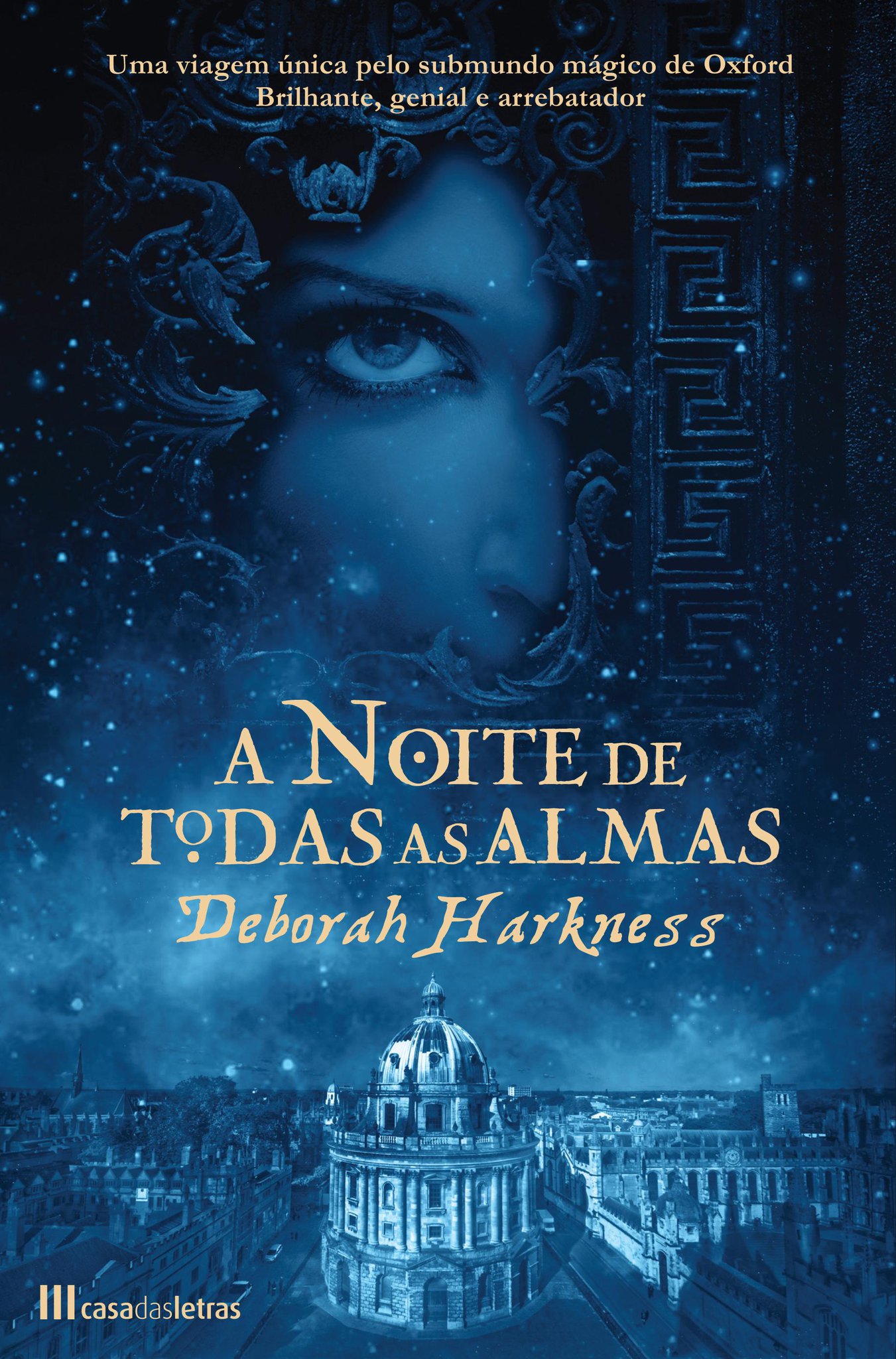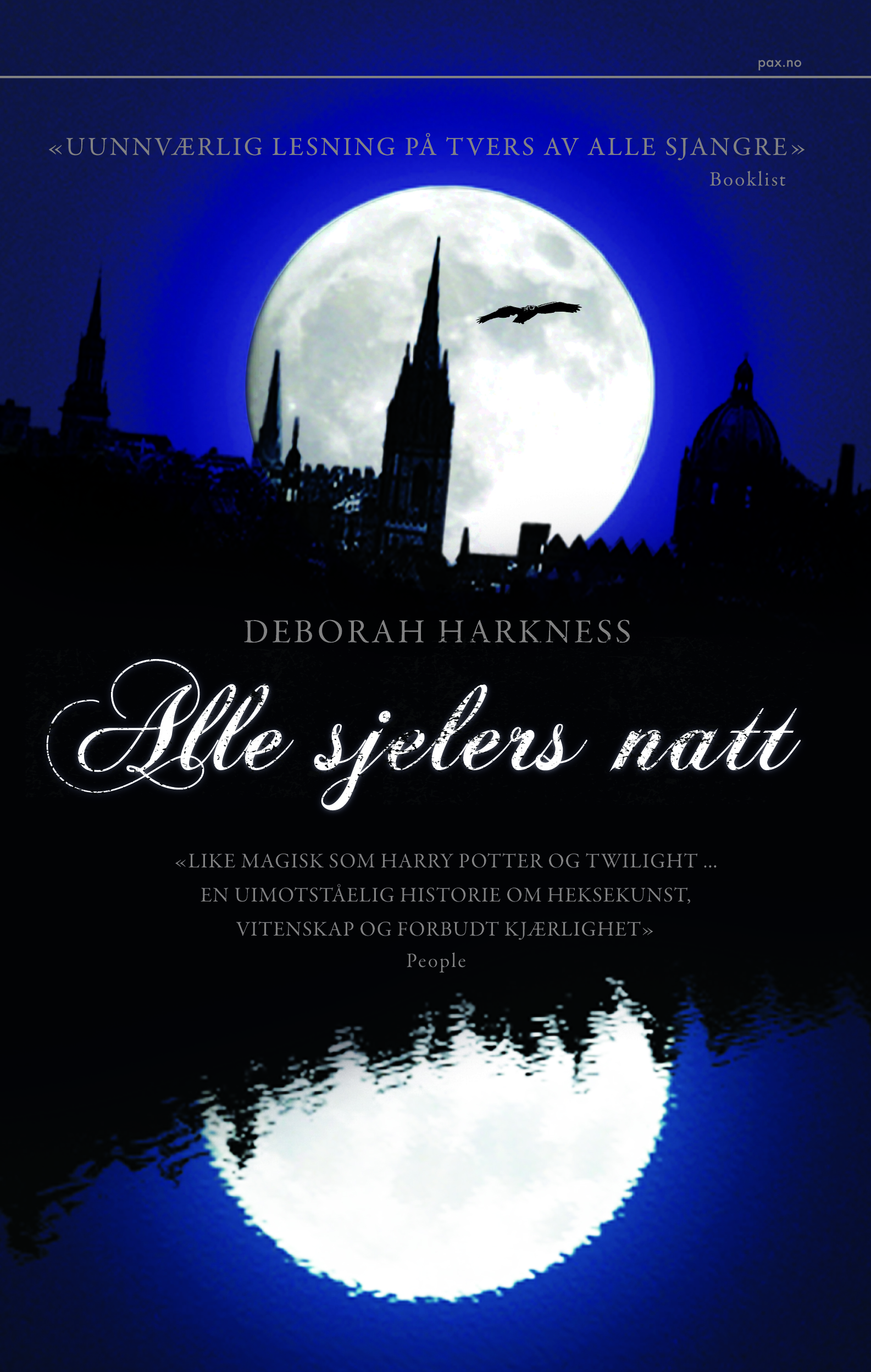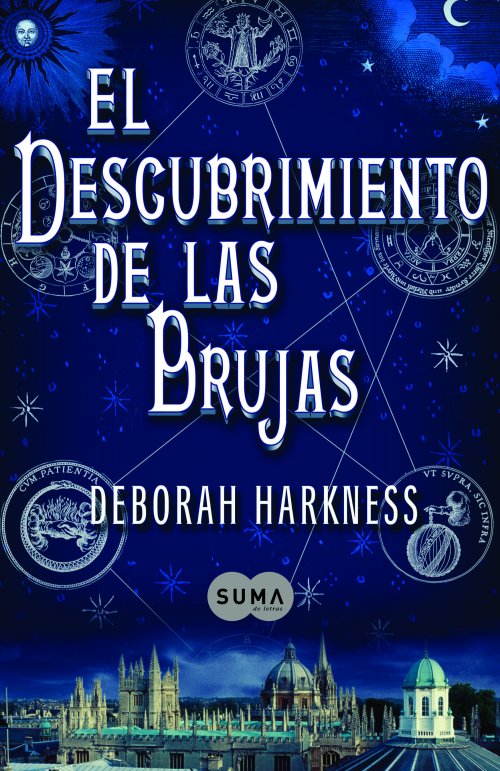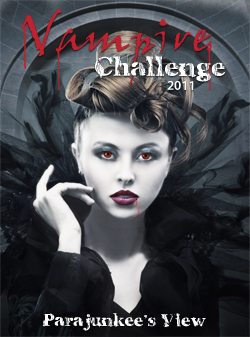I had called up an alchemical manuscript that I needed for my research and that also seemed to possess an otherworldly power that was impossible to ignore. My fingers itched to open it and learn more. Yet an even stronger impulse held me back: Was my curiosity intellectual, related to my scholarship? Or did it have to do with my family’s connection to witchcraft?
A Discovery of Witches, Deborah Harkness pp. 5
Sometimes scholars should be more careful: Youthful researcher Diana Bishop briefly consults an medieval alchemical manuscript; then, after jotting down a few notes, sends it back to its prison in the stacks. Unfortunately for Diana, her quick dabbling has unleashed a long suppressed curse—and now only she can break the spell.
This is a debut novel by Harkness and it reminds me of a few other debut novels that caught my eye and that were really a pleasure to read: The Historian by Elizabeth Kostova; Angelology by Danielle Trussoni; The Thirteenth Tale by Diane Setterfield; The Physik Book of Deliverance Dane by Katherine Howe; The Monsters of Templeton by Lauren Groff. The thing that these and A Discovery of Witches all have in common is predominantly the fact that it is told (almost exclusively) through a woman’s point of view.
 I know – how rare is that in these genres – that mix history, science, thrillers and religion? They are all different books on vastly different subjects, with very different heroines with their own unique agendas, and yet, the theme of this – the feel of these novels, is the same for me. I imagine it is a very similar feeling to those who pick up different authors of similar subject matter and feel at home – it’s like that. In The Historian our protagonist is searching for her own family roots and the disappearance of her mother and father; in Angelology, our sheltered hero embarks on her own self-discovery through the questioning of her own origins and the secrets of her birth; in The Thirteenth Tale, a plain woman rises to maturity when faced with the stories of another woman and forced to ascertain truth and fiction; In Deliverance Dane, a skeptic’s world is turned on her head through meticulous research into the past trial of a hung woman; in Templeton, a confused scholar returns to her childhood home in hopes of understanding herself and all that has happened in her life; and in Witches, an historian is forced to face her own darkest fears in order to achieve balance in her own life.
I know – how rare is that in these genres – that mix history, science, thrillers and religion? They are all different books on vastly different subjects, with very different heroines with their own unique agendas, and yet, the theme of this – the feel of these novels, is the same for me. I imagine it is a very similar feeling to those who pick up different authors of similar subject matter and feel at home – it’s like that. In The Historian our protagonist is searching for her own family roots and the disappearance of her mother and father; in Angelology, our sheltered hero embarks on her own self-discovery through the questioning of her own origins and the secrets of her birth; in The Thirteenth Tale, a plain woman rises to maturity when faced with the stories of another woman and forced to ascertain truth and fiction; In Deliverance Dane, a skeptic’s world is turned on her head through meticulous research into the past trial of a hung woman; in Templeton, a confused scholar returns to her childhood home in hopes of understanding herself and all that has happened in her life; and in Witches, an historian is forced to face her own darkest fears in order to achieve balance in her own life. The point of those thumbnail sketches of the books’ protagonists is that from very different objectives comes very good and similarly … feelinged (my new word) … books. And all worth reading. (Actually, I kept thinking of more to add – like The Peacock Emporium and the Dress Lodger – but I had to stop, right?). And that feeling I get is a little like home for me.
Anyways, barring more titles that my mind shoots at me that also embody this feeling, I will now carry on with my review of A Discovery of Witches.
It begins with a discovery – not of witches, but rather, with a discovery of a stubborn little book, titled very simply Ashmole 782, that Diana (our hardcore PhD investigator of alchemical texts) orders from the stacks believing it to be just another manuscript to help her write out a speech for a conference, and her next book. She’s accomplished, our Diana – all scholarly like and pretty sporty, rowing in those god-awful boat things on the river that are so popular at those old universities that all seem situated on rivers (it’s an odd quirk, but I digress …). But Diana has not had it easy – heir to not one, but two powerful magic beings, she has been orphaned since she was a child and raised by her (hilariously) strict aunt Sarah (who is slowly being mellowed out by her awesome girlfriend, Emily), an upbringing that had led to Diana not trusting or using her magical abilities for anything more then to grab a book off a top shelf (in her defense – all those shelves were made biased against short people) or fix a washing machine that is flooding her tiny apartment .
 Diana is studying in England, minding her own business, when this manuscript plops into her lap and she can’t help but read it – you see, it calls to her, somehow. It opens for her and allows her time to make her notes and observations, and then when she puts it back – it seemingly disappears. And that’s when the trouble begins. That’s when the Creatures – Diana’s term for witches, vampires and daemons – begin to surround her and watch her.
Diana is studying in England, minding her own business, when this manuscript plops into her lap and she can’t help but read it – you see, it calls to her, somehow. It opens for her and allows her time to make her notes and observations, and then when she puts it back – it seemingly disappears. And that’s when the trouble begins. That’s when the Creatures – Diana’s term for witches, vampires and daemons – begin to surround her and watch her. Diana, as a rule, tries and stay away from all creatures, except those witches she happens to be related to. Gillian – an American witch also studying in England, persistently pushed at her, trying to be her friend, and daemons follow her around all the time, but she generally keeps to herself and human company. But mostly just herself.
So imagine her irritation with our other main character, Matthew. Mathew is a vampire. Tall, lean and dark with pale skin, the millennia-old scholar is also a scientist and a bit of a bossy leader-type who doesn’t like not getting his way. And he keep stalking Diana.
After catching him a few times, Diana finally gives him the time of day. And to his credit, he is mostly truthful. He wants the book – the manuscript – she called. The magic one. In fact, all of them do. That’s why she’s been getting so much attention. Diana doesn’t trust him – this is no Twilight rehash for older audiences (though the comparison has been made, I think those who made it are into the sensationalism of it, not the substance of it) – and when pushed, she pushes back (at least initially – she became irritatingly mellowed out by the end). But fate will not be ignored, or so we find out – and sooner rather than later, they become friends in this quest about finding out what the manuscript really is and what that means for the community of Creatures, Matthew informs Diana, that is slowly becoming extinct.
The duration of Diana and Matthew’s cat-and-mouse game is long. Very long. You need patience. Lots of it. But the games they play, the words and the sentiments and experiences carry a note of honesty that calls to me. Diana is first and foremost a scholar – many reviewers of the book have looked to this part of the story and ridiculed Diana as naive or passive, but I took a different perspective – she’s a scholar, her slow and cautious move towards the acceptance of Matthew as a presence in her life was more out of curiosity then because he stalked her into submission (Reviewers: really, the over-used and negatively stressed, not-so-subtle references to Twilight really have to stop – like, really. I actually stop reading, roll my eyes and search online for another review. Not everything is a re-edit of Twilight – read something new! … Okay, rant over.): she wants to know what he knows – she wants to discover what the world was like, and if it matches the image in her head she made after years of study. And Matthew – with those thousand and some odd years under his belt, has those stories.
I think the nexus of the book lies not in their budding relationship (which, again, is long and slow and when it gets to where you initially want it to go … he pulls back. Honestly – chaste vampires out there – I do not understand you. At all.) but in their pseudo-scientific turned historic turned philosophical conversations.
There is a particularly interesting one that is at odds with everyone but Diana: Matthew is telling her, at his lab, that the genetic coding of Creatures is different from humans – vampires and witches have 24 Chromosome pairings and Daemons have an extra chromosome (Chromosome 47) to the humans’ 23 pairings (46 chromosomes). Anyone with grade eight bio knows that chromosomes are what hold our genetic information, and anyone with access to the newspapers and/or the internet know that for the past little while, scientists have been attempting to map out the genetics of our chromosomes, assigning different codes meanings. Essentially, that is Matthew – with a twist I find particularly telling.
You see, Matthew is the scientist with an agenda. Oh yes, he does want to save the Creature races and blah blah blah – but he is also that type of scientist who thinks he already knows the answer, and so his mind is a little closed to other possibilities. Ditto for his lab hands – the terrifying Miriam and the playful Marcus – who also happens to be Matthew’s son (in the vampire way). Also ditto for the witches – in a bad way, especially Diana’s Aunt Sarah.
So when Diana asks if they are the same – essentially she gets yelled at. And I am left not entirely convinced that she’s wrong.
Diana’s ignorance of her own genetics is necessary for the book – it is the same trope used in fantasy novels and paranormal novels – the one character who must be introduced to the world so the reader has someone to help them as they make sense of the world. We don’t need that character in contemporary detective novels (with exceptions for particularly seedy underworlds or echelons of power that regular readers have no knowledge of) or romances, or even historicals – you can get most of the information based on character reflection and narration (like, “It was the year of Canadian confederation, 1867 – when the Victorian culture was still very much in effect in Upper Canada, and the inhabitants of Lower Canada still felt spurned over the Battle of Abraham”). Not so when new worlds are introduced – then you can’t expect the ordinary reader will know that all aliens are blue, all royal boys must complete douchbaggery training, and all elves are actually descendants of some bigwig who know one’s seen – you can’t wiki that either. What would you wiki, exactly? Most book and series don’t have much in the way of entries on wiki, and paging through endless discussion forums can make you wanna rip your hair out. That being said, some authors can actually give you what you need without a clueless character – see Discworld and Terry Pratchett. However, that is rarely done right. And Diana being clueless not only introduces her world to us, bit by bit, but it also creates a conflict between her and the Creatures where she is not exactly one of them, but is definitely not human either.
All that to say that, when other reviewers have criticized her for being naïve and slow, it actually was a pretty effective narration tool. Oh come on, like you absolutely knew that in this world Vampires could frolic in the sun with glee? Yeah, thought not. Let it ride, angry people.
Like I said, the main criticism I have about this book … is ….the …pacing. Holy Toledos is it slow. Like something happens, and just like an academic, a whole thesis is written about it before it gets resolved. I am actually being – mostly – serious here.
That being said, the slow parts are frustrating but also pretty good in and of themselves. See, I get to a point where I see some action and I am like – “Oh yeah! Let’s get this started!” (I blame my sister and my Summers of Arnold, Summers of Alien and Summers of Horror – movie marathons of films that we loved that all happened to be action films. Without Bruce Willis … ugh.) and then I feel … put upon to sit there and wait for the discussions and intrigue to desist before someone else gets shot (okay, so no one actually gets shot – but I was thinking they might!).
Where was I? Oh yes, gems of words and moments in the slow periods. The thing about the languid slowness of those periods of prose where nothing happens is this: when the action happens it takes you off guard. Like when Diana accepts an offer for dinner from someone she trusts and then is metaphorically ambushed by a grisly irritating scary academic who seems to be challenging her. Unexpected and intriguing, with enough threat of action to whet my appetite for more. It was a very interesting, if frustrating, way to write her first book, but I think for the characters to be plausible and for the story to flow properly (and to lay enough groundwork for all those secrets) it had to be done this way.
Basically, it is long and yes, frustrating, but it does justice to the story.
The ending … my Aunt described the ending as strange … and yes, it is. But I get why she did what she did – and in the interests of remaining spoiler-free, that is all I will say.
Two final things:
First – How about all these covers? I have included the ones I have found – how in love are you with them? I am in love. Especially the French black and white one – super savvy. I will admit that, in general, book covers mean a lot. Enough anyway, to pique my interest. Not enough to deter me though. I have had debates with the Boyfriend about this on and the only thing we agree on is that – those books publishing houses believe in will get more ching-ching for their covers. That’s about it. I guess they believe in this book …
Second – Go read this book It really is a great start to what looks to be a promising series.
Read if you Liked:
- Angelology by Danielle Trussoni (I reviewed it here.)
- Graveminder by Melissa Marr (I reveiwed that here.)
- The Historian by Elizabeth Kostova
- Water for Elephants by Sara Gruen (even with it's male POV, similar)
- The Thirteenth Tale by Diane Setterfield (Which has gone missing in my makeshift library ... again!)
- The Physik Book of Deliverance Dane by Katherine Howe (I reviewed it here)
- The Monsters of Templeton by Lauren Groff
Up Next to Review: The Masque of the Black Tulip by Lauren Willig
Cheers!












I came across your page from Deborah Harkness's Facebook page. I love your review of A Discovery of Witches and thought that I should let you know that I am going to post a link to this blog on my online bookclub, Reader Roundtable (www.readerroundtable.com) in the forums (www.readerroundtable.com/forums or just click log in from the main page if you want to see it). Hopefully that's ok with you...if not, please let me know.
ReplyDeleteI wouldn't mind at all! Thanks for reading it Pedigreed Housewife! I will check out your Reader Roundtable soon! :)
ReplyDelete